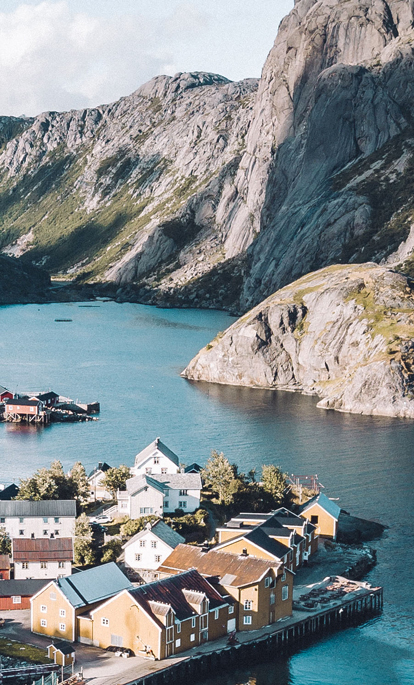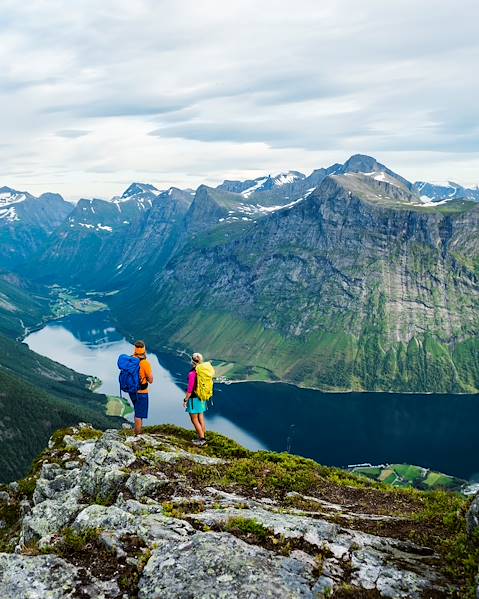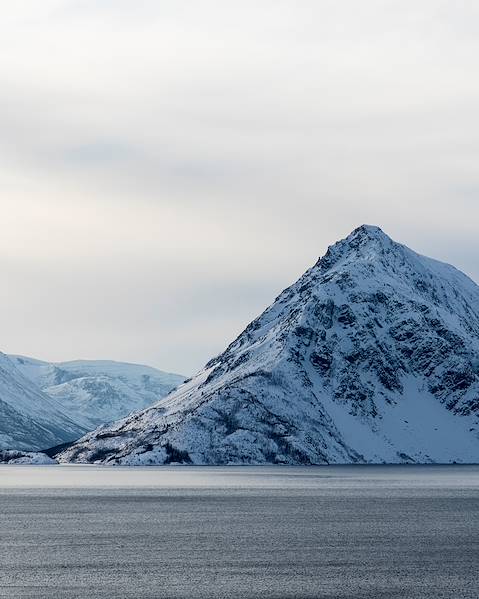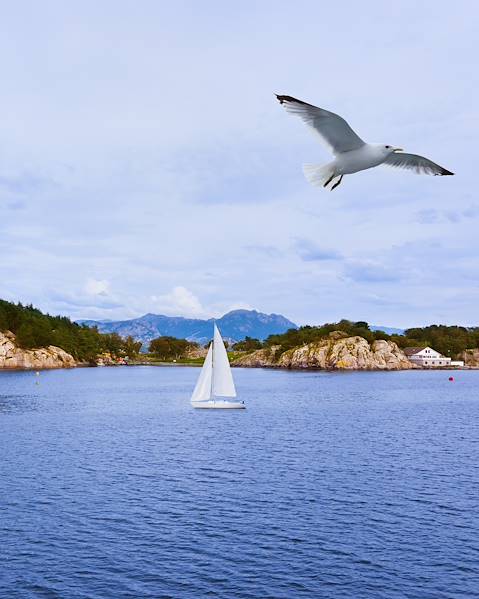Population
5,510,258 (2019)
Official language
Norwegian
Language spoken
Almost 100% of the population of Norway speaks Norwegian, and Norwegian has two written varieties, Bokmal (Book Language) and Nynorsk (New Norwegian). The Sami still practice several variants of their language including North Sami, Lule Sami and South Sami, and a language called Kven is a variety of Finnish which is acknowledged as a separate language. English is widely spoken across the country, so if you're planning a trip to Norway, travelling around will be a breeze
People
Outside of the general Norwegian population, the Kven and Skogfinn (of Finnish origin) communities have official minority status. As Lapland’s indigenous people, the Sami are not treated as a minority; they have their own parliament and some administrative autonomy. Of the 80,000 Sami living in northern Scandinavia, about 50,000 are living in Norway.
Religion
85% of Norwegians belong to the Evangelical Lutheran Church of Norway, but this membership is primarily cultural, as religious practice is low. There is no separation between Church and State: the Church of Norway is recognised by the constitution and the King is the head. However, Norwegians can still enjoy full religious freedom.
National Holiday
May 17: Anniversary of the Constitution of 1814. On this day, Norwegians tend to celebrate by wearing the traditional costumes of their native region.
Holiday Schedule
- January 1: New Year.
- In March or April: Easter (Holy Thursday to Easter Monday).
- May 1: Labor Day.
- May: Ascension and Pentecost.
- 23 June: Feast of St. John.
- 25 and 26 December: Christmas.
History
Norway has a rich viking history, and there are many museums across the country that explain and celebrate this intriguing period - especially in the capital city Oslo, where you can see a full viking ship and learn about the voyages and customs onboard. From the ninth to the 11th century, the Vikings extended their influence over the North Atlantic islands, then their longships took them to Ireland, Iceland, Greenland, and potentially even to the American East Coast. Around 885 AD Harald Fairhair unified power west of Scandinavia for the first time. His son, Erik Haraldsson - nicknamed Eric Bloodaxe - took to the throne upon his father’s death after killing two brothers who opposed him. Olav Haraldsson (995-1030) became the new king - King Olaf II - in 1015 and brought Christianity to Norway and gave the country a political structure. He is often referred to as the St Olaf and Rex Perpetuus Norvegiae (meaning Eternal King of Norway).
In the early 14th century, Oslo became the capital city, but in 1380, the young King Olav IV is put under pressure by his Danish mother, Queen Margrethe to unite Denmark, Norway and Sweden. In 1397, the Kalmar Union united the three countries under the rule of Denmark, and the Union between Denmark and Norway lasted until 1814. Norway then declared its independence and adopted a constitution on 17 May 1814. Following this, the country was ceded to the Crown Prince of Sweden in a union that meant that Sweden and Norway were ruled under a common monarch and common foreign policy. This century saw a rise in the national identity of Norwegians and fuelled a referendum in 1905 that dissolved the union.
Norway remained neutral during World War I, but during World War II the country could not remain neutral as it was invaded by Germany in April 1940. The king and the government went into exile in London and the country was devastated by the war, and after the war ended, reconstructing the economy and industry was the main priority. Under a Labor leadership, the country became a model of social democracy, and the economy experienced an excellent development. Norway joined the UN in 1945 - and even provided the organisation's first Secretary General, Trygve Lie (1896-1968) - and then joined NATO in 1949. The discovery of oil and gas fields in the late 1960s gave the economy a huge boost and opened an era of prosperity.
Policy
Norway is a constitutional monarchy. The King is in an honorary and symbolic role - he appoints the government, but it is subject to a vote of confidence from parliament. This parliament is made up of 169 members elected for four years.
Famous Norwegians
- Eric the Red (c. 950-1010). His father was exiled from Norway to Iceland and then travelled on to Greenland; his son, Leif Erikson (c. 970-1025) is thought to have explored as far as the American continent.
- Harald Fairhair (circa 850-933). Victorious in the naval battle of Hafrsfjord (about 872), he became the first king of Norway, under the name of Harald I. The sagas describe him as a prince, warrior and unifier.
- Edvard Grieg (1843-1907) was a famous composer, whose iconic work Peer Gynt (1874) was turned into a drama by the famous playwright Henrik Ibsen (1828-1906).
- Thor Heyerdahl (1914-2002) was a Norwegian explorer and adventurer who crossed the Pacific Ocean on the Kon-Tiki balsa wood raft in 1947.
- Gro Harlem Brundtland (born 1939) was the first female Minister of State (Labor) in Norway. She was also the linchpin of the formalisation of the concept of sustainable development, as part of the World Commission on Environment and Development (1987 Brundtland Report, Our Common Future).
- Jan Garbarek (born 1947) is a jazz musician who has placed saxophone with the Hilliard Ensemble.
Etiquette
Service charges are included in your bill in Norway, but tipping is becoming more commonplace in restaurants; you can either leave cash on the table or add a tip when paying with card on the card terminal.
Norwegians are friendly but not overly affectionate of familiar, so shake hands when greeting rather than kiss as other countries on the Continent do.
Since June 2004, smoking is prohibited in all public places.
Evening meals tend to be early in Norway and you’ll find most people sitting for their meal before 7pm.
Shopping
Norway is famous for trolls so you can find a lot of troll-related goods in Norway, whether it’s colourful and modern or traditional carved wood. Shopping in Norway also offers a variety of leather goods and items made from antlers, such as kitchen utensils or ornaments. Woodworking is traditional and it’s easy to find lots of pretty objects of carved and painted wood. For warmth and comfort, traditional sweaters in Norway are made of pure wool - an excellent investment for cold winters. Norway is expensive but you can find quality, handmade items in boutique shops.
Food
Traditional Norwegian food includes lots of dried or fermented meats and fish; cheese; hearty bread and delicious root vegetables and roasted meat. Generally they eat a large breakfast followed by a small lunch, then a larger evening meal (eaten early). You can try local seafood and meat (including game such as reindeer) and meatballs and stews are common. A popular dish is salmon prepared in many ways - Roklaks (smoked) or Gravlaks (marinated).
Drink
The beer in Norway is excellent but very expensive, as is all alcohol in Norway due to the tax. There are lots of nice bars to enjoy national brews. Only state stores (Vinmonopolet) are allowed to sell wines and spirits, but if you want to purchase them then be aware that there aren’t that many around, and are only open certain hours, meaning that they can get quite crowded on weekends. The tap water is very good and generally you’ll be served tap water for your table unless you explicitly request bottled water.
















